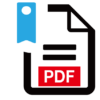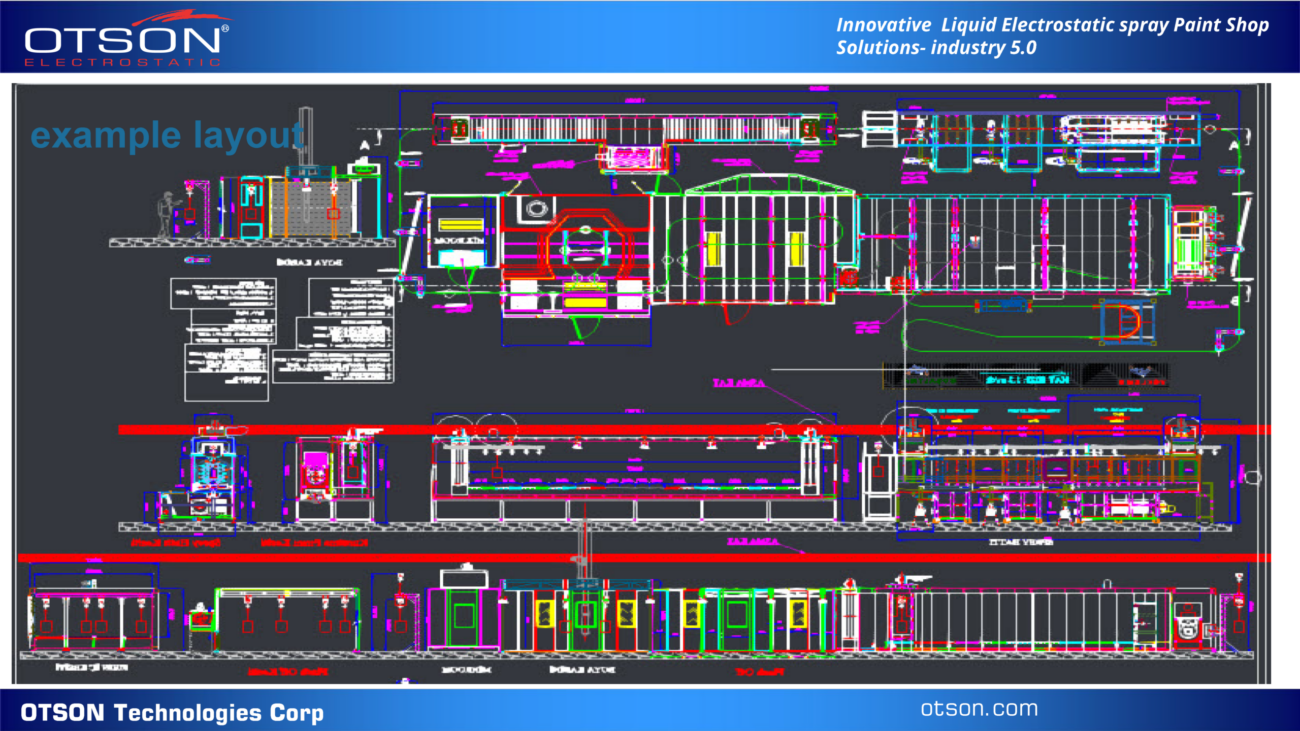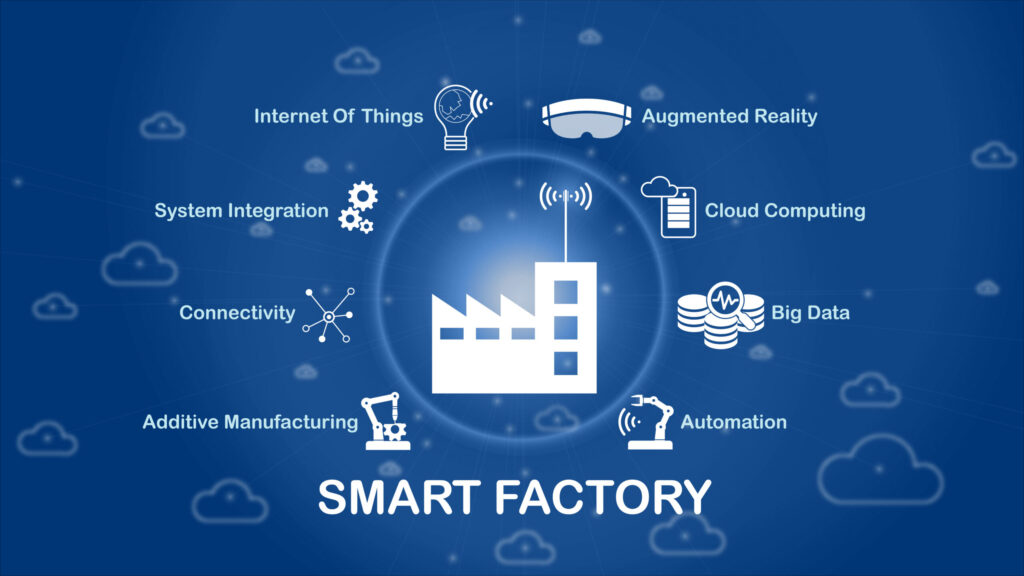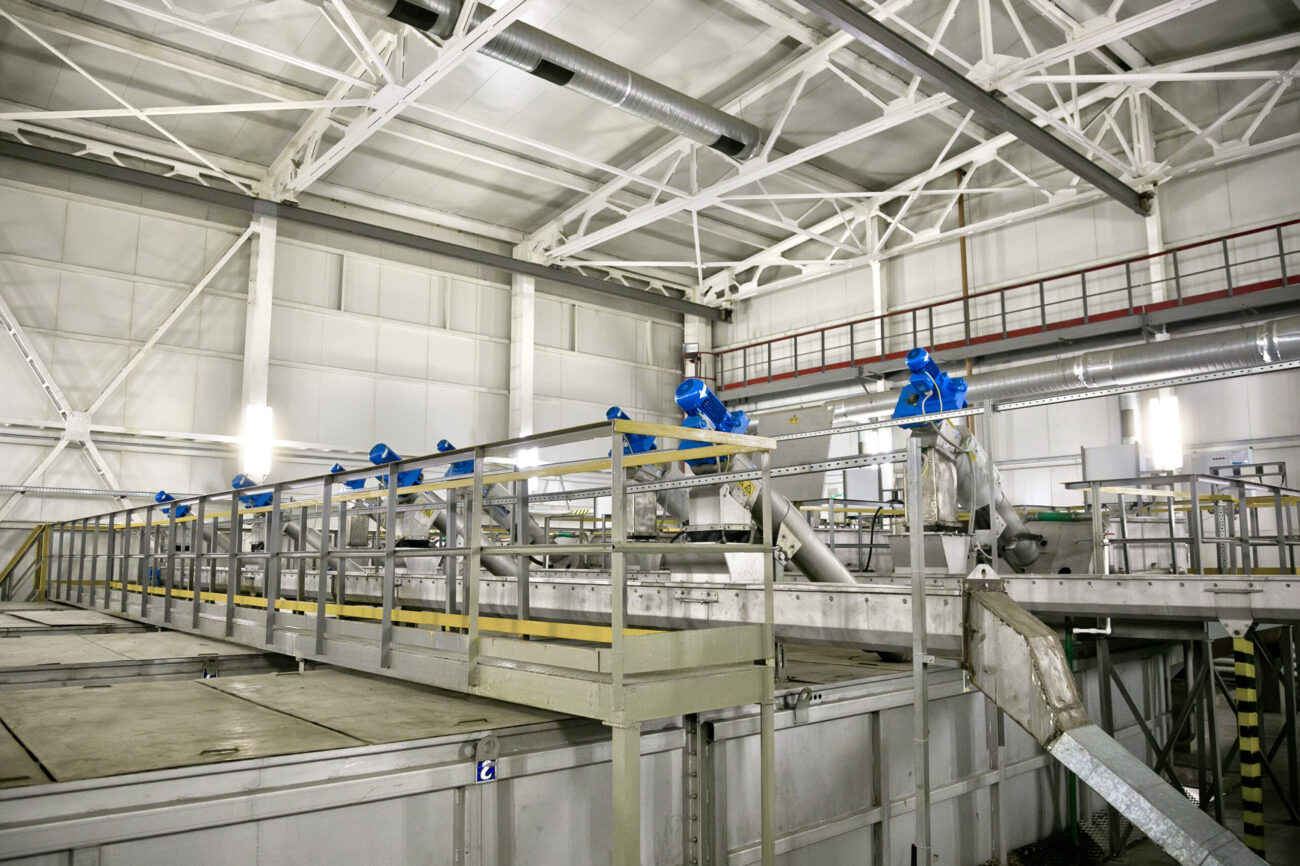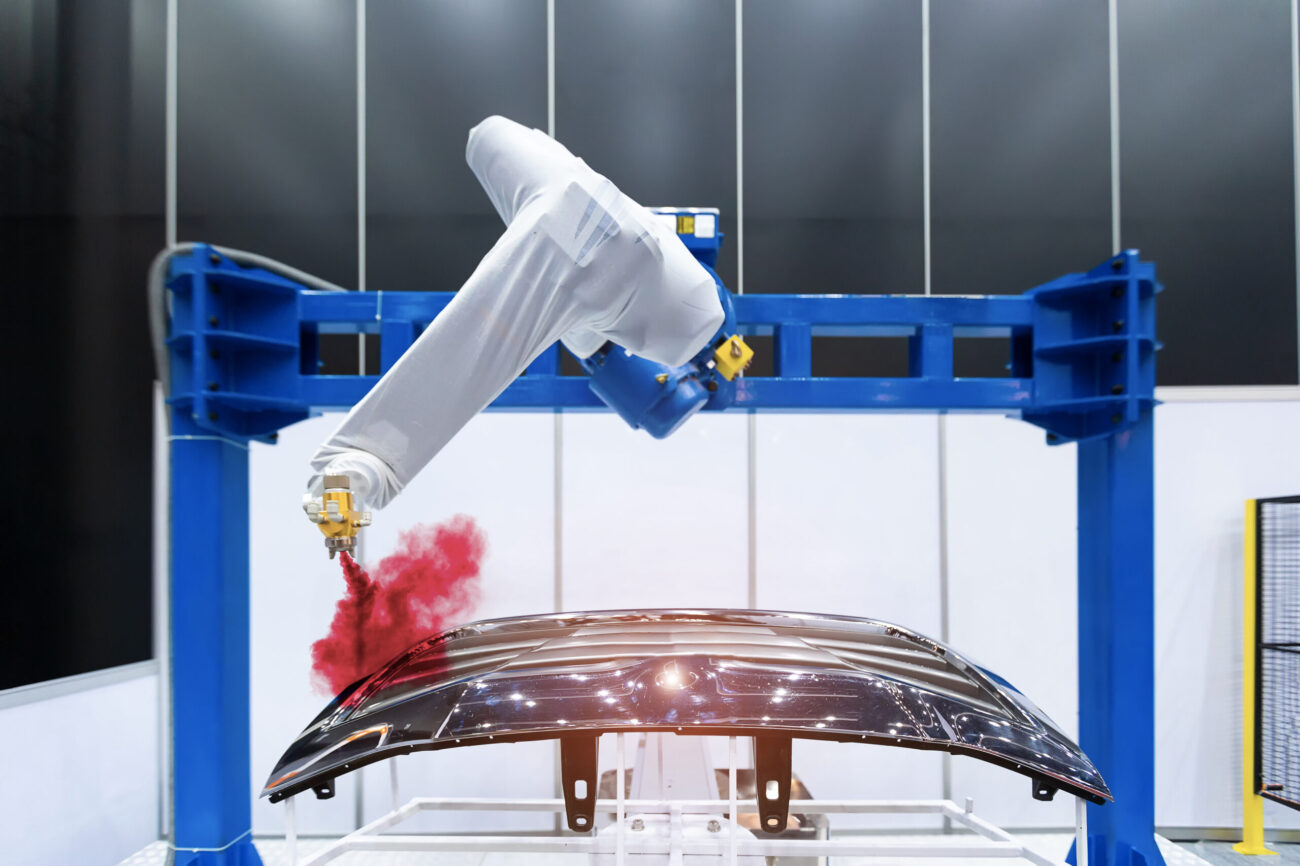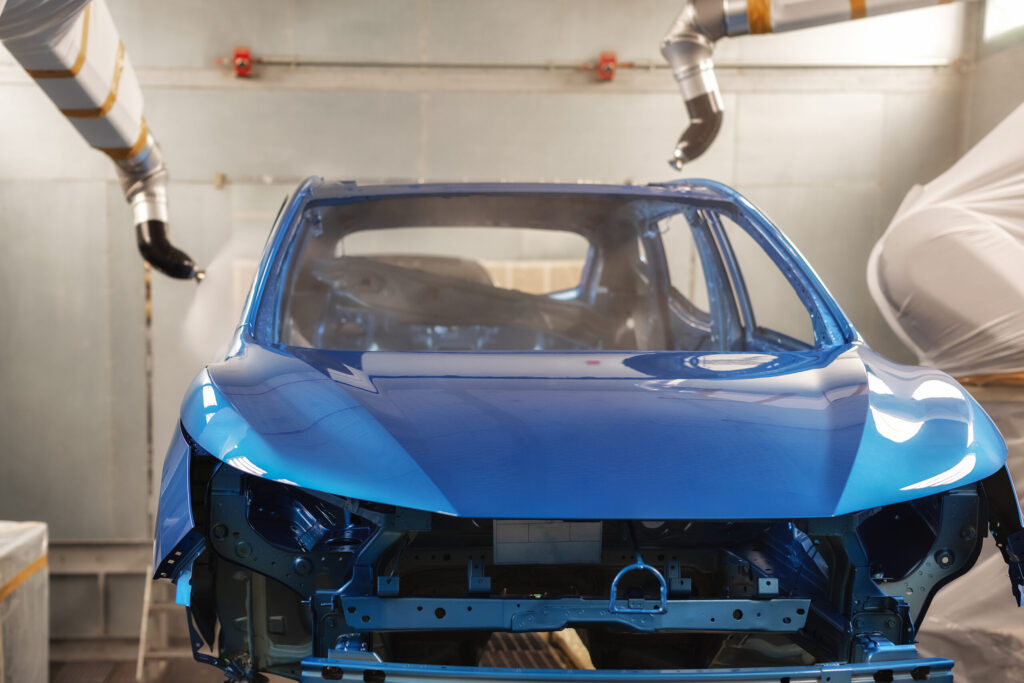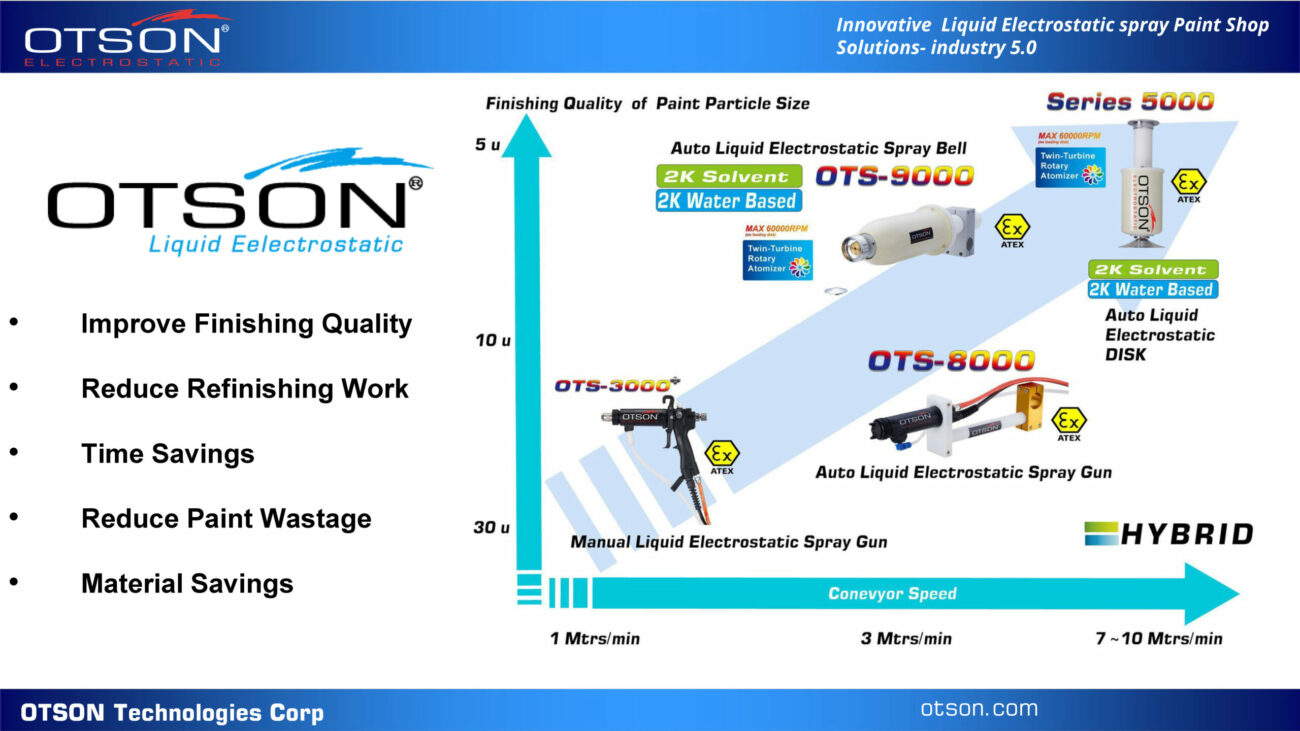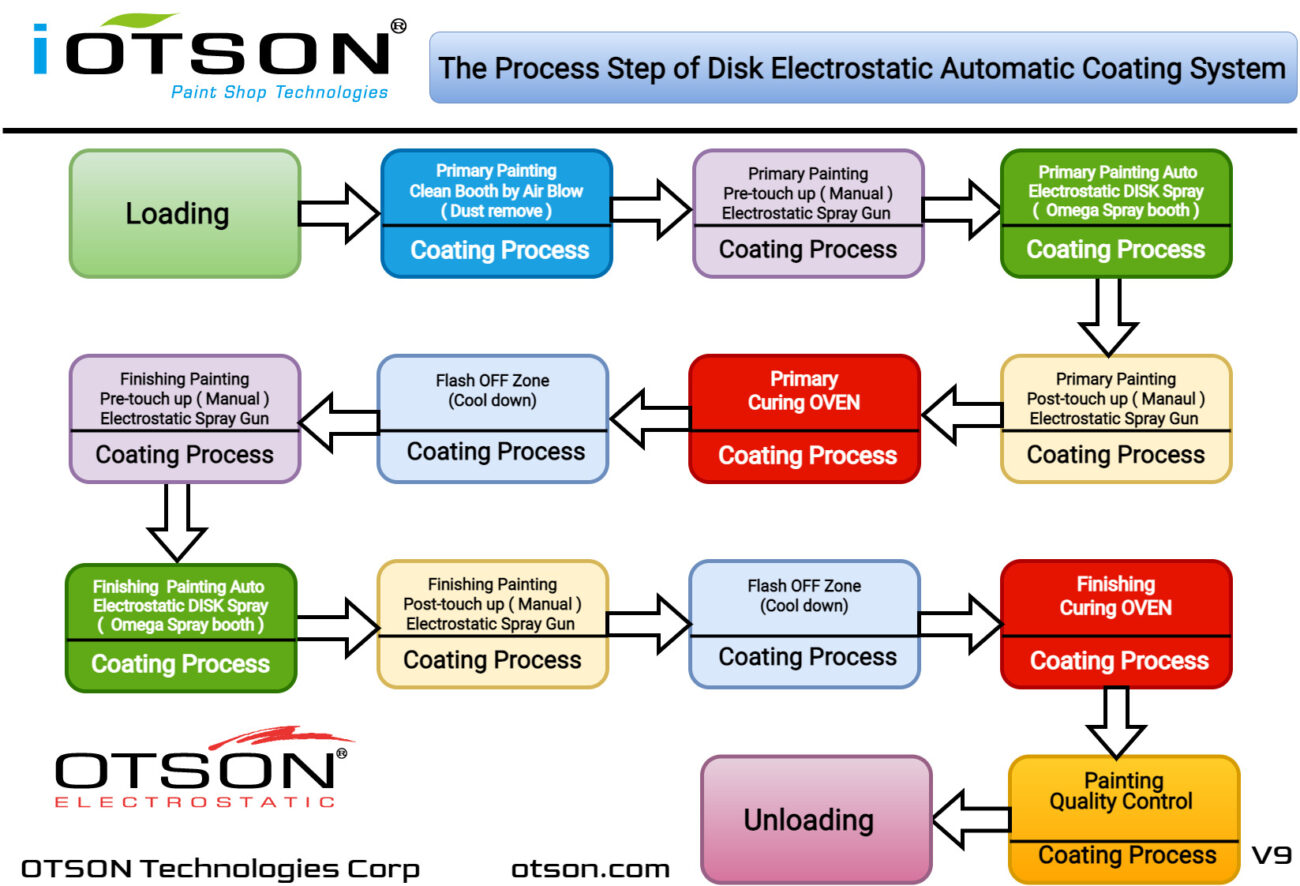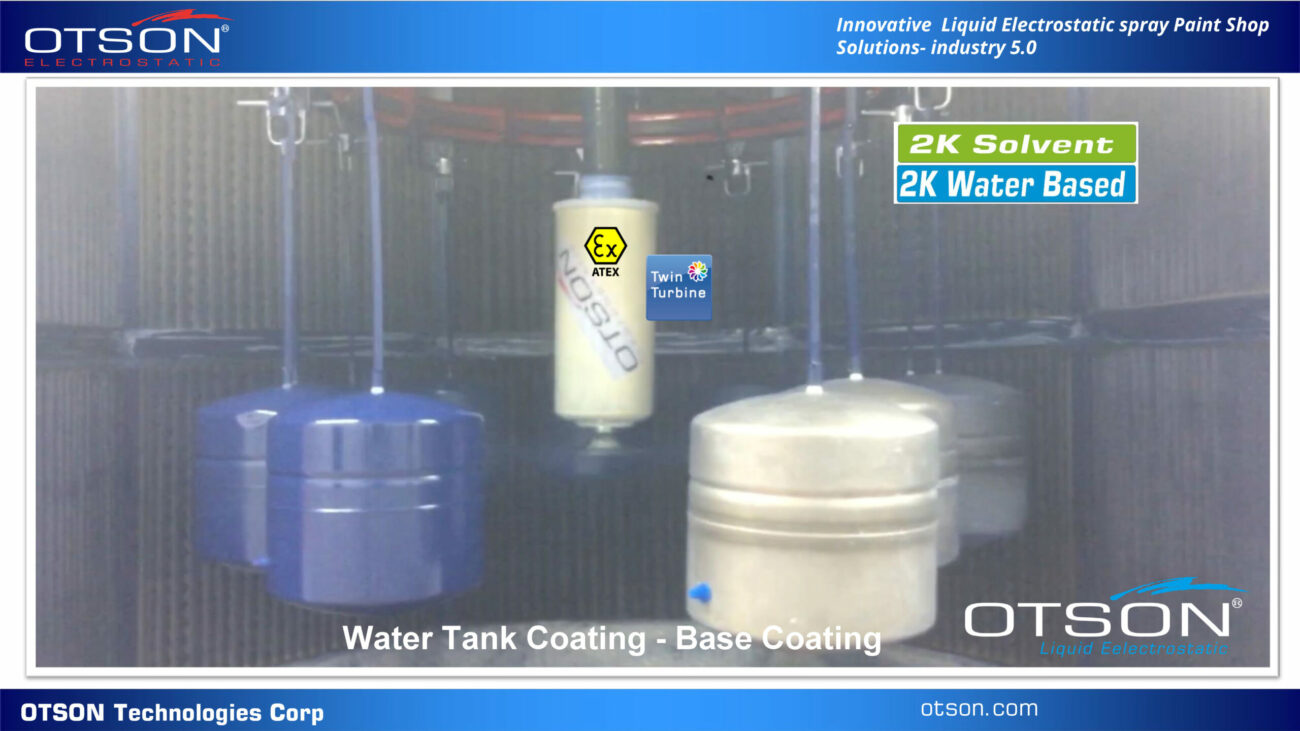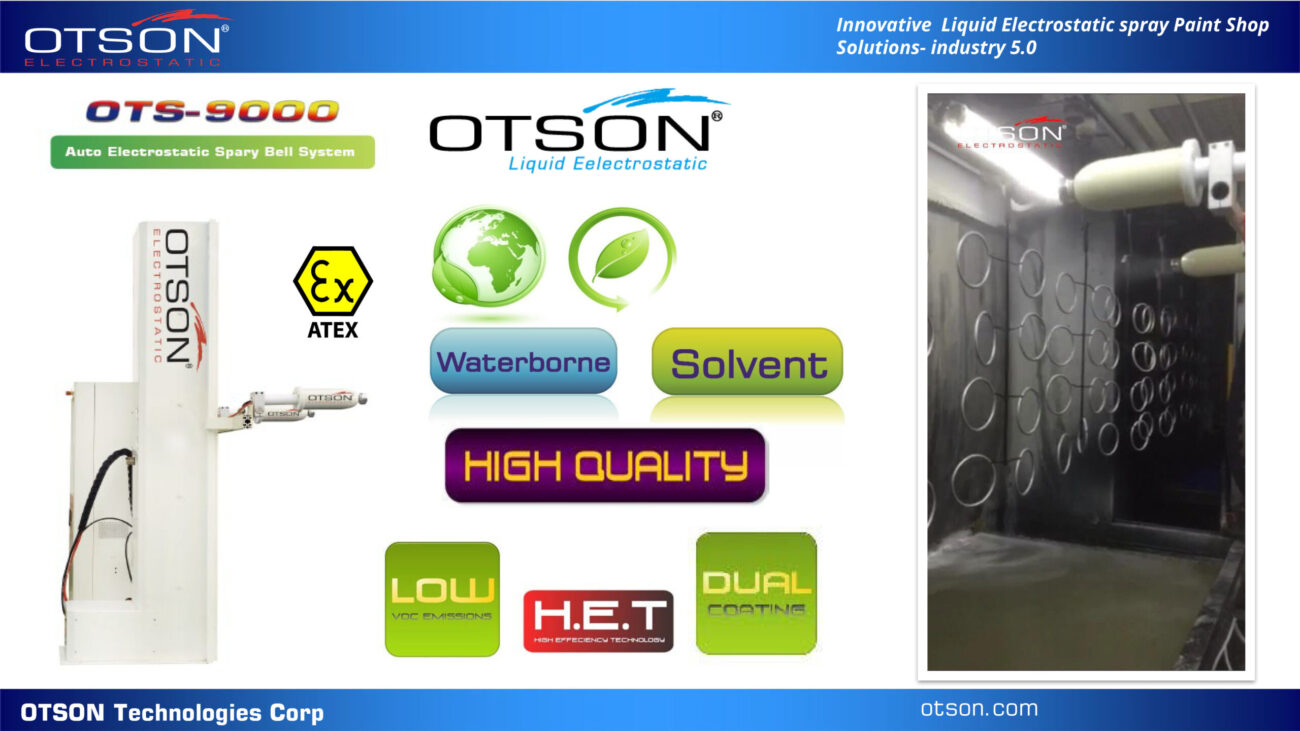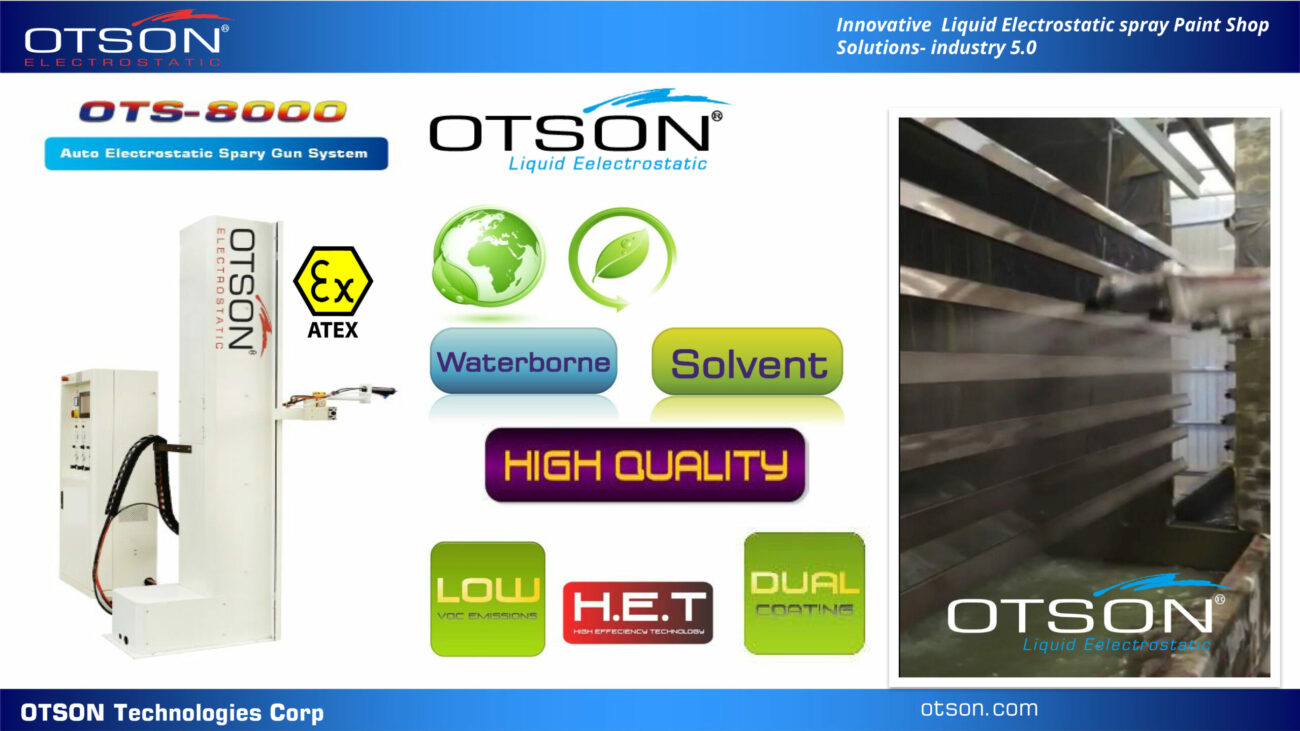iOTSON PAINT SHOP -Electrostatic Spray – THINK GREEN and Power Saving
Industry 4.0, the Fourth Industrial Revolution, is a current trend in manufacturing technology that involves automation and data exchange, utilizing advanced technologies such as IoT, AI, and machine learning. On the other hand, Industry 5.0, the Fifth Industrial Revolution, focuses on creating a more sustainable and human-centered manufacturing environment by building on these technologies. A paint shop that operates as part of Industry 5.0 may incorporate advanced technologies and practices to optimize the coating process, reduce waste, and enhance efficiency. Some of the key features of a paint shop operating as part of Industry 5.0 may include:
- Human-centric approach: Industry 5.0 prioritizes the well-being and safety of workers and aims to enhance their working conditions through the use of advanced technologies.
- Sustainable practices: A paint shop operating as part of Industry 5.0 is expected to incorporate eco-friendly and sustainable practices to minimize its environmental impact.
- Integration of advanced technologies: To improve efficiency, accuracy, and quality, a paint shop may integrate advanced technologies such as robotics, AI, machine learning, and IoT-enabled equipment and systems.
- Real-time data monitoring: IoT-enabled sensors can monitor various aspects of the coating process, enabling real-time data analysis, and assisting in decision-making for process improvement.
- Predictive maintenance: AI and machine learning can be leveraged to predict equipment failures and reduce downtime by performing predictive maintenance.
- Customization: Industry 5.0 encourages customization of products and processes to meet specific customer demands, enabling paint shops to provide unique and tailored coating solutions.
In conclusion, Industry 5.0 takes Industry 4.0 to the next level by focusing on sustainability, human-centered practices, and the integration of advanced technologies in manufacturing. A paint shop operating under this framework has the potential to increase efficiency, reduce waste, and enhance the quality of the coating process, which ultimately benefits both the business and the environment.
At OTSON, we specialize in the manufacturing and design of professional paint shop equipment. Our expertise extends to various industries, including automotive, woodworking, bicycles, glass bottle and metal parts. We understand the unique needs and requirements of each industry and are able to provide customized solutions to meet their specific demands.
Our paint shop equipment is designed to improve efficiency, reduce waste and enhance the quality of the coating process. We use advanced technologies such as Industry 5.0, IoTSON, robotics, AI, and machine learning to create a more human-centered and sustainable manufacturing environment.
One of the latest trends in manufacturing technologies is Industry 5.0, also known as the Fifth Industrial Revolution, which builds on the current trend of automation and data exchange. A paint shop that is designated as part of Industry 5.0 uses advanced technologies and practices to improve efficiency, reduce waste, and enhance the quality of the coating process. This includes IoT-enabled equipment and systems, robotics, AI, and machine learning.
At OTSON, we are dedicated to providing our customers with the highest quality paint shop equipment and services. Our team of experts has extensive experience and knowledge in the field and is able to provide support and guidance throughout the entire process, from design to installation and maintenance.
Our focus is to help our customers improve their production efficiency and achieve a high production rate. We are proud to be a professional paint shop equipment manufacturer and are committed to providing our customers with the best possible solutions for their coating needs. With our expertise and use of advanced technologies, we are able to create a more sustainable and human-centered manufacturing environment.
The production rate of a paint shop factory refers to the amount of paint that the factory is able to produce in a given time period. This will depend on a variety of factors, including the size and capacity of the factory, the efficiency of the production processes, and the availability of raw materials and other resources.
There are a few key considerations that can impact the production rate of a paint shop factory:
- Capacity of the mixer room: The capacity of the mixer room, which is the area where the paint is mixed and prepared for use, will impact the production rate of the factory. If the mixer room is small or has limited equipment, it may be able to produce less paint than a larger or more well-equipped mixer room.
- Efficiency of the production process: The efficiency of the production process, including the speed and accuracy of the mixing equipment and the efficiency of the material handling and storage systems, will also impact the production rate of the factory.
- Availability of raw materials and other resources: The availability of raw materials, such as pigments and solvents, and other resources, such as labor and energy, will also impact the production rate of the factory. If these resources are in short supply or not being used efficiently, it may limit the factory’s production capabilities.
- Quality control: It is important to ensure that the paint being produced meets the required quality standards. This may involve performing regular quality control checks to ensure that the paint is properly mixed and meets all necessary specifications. This can impact the production rate of the factory, as time must be set aside for these checks and any necessary adjustments to the production process.
- Production schedule: The production schedule of the paint shop factory will also impact the production rate. If the factory is operating at full capacity, with all of its equipment and resources being used to the maximum extent possible, it will be able to produce more paint than if it is operating at a lower capacity.
- Customization: Some paint shop factories may offer customized paint products, which may require additional time and resources to produce. This can impact the overall production rate of the factory, as customized products may take longer to produce than standard products.
- Automation: The use of automated systems and equipment can help improve the efficiency and speed of the production process, increasing the production rate of the factory.
Overall, the production rate of a paint shop factory will depend on a variety of factors, and it can be influenced by changes in the factory’s equipment, processes, and resources. By carefully managing these factors, it may be possible to increase the production rate and improve the efficiency of the factory.
At OTSON Technologies Corp, we specialize in the manufacturing of iOTSON paint shop technologies, which includes the design and production of spray booths for electrostatic spray systems. Our spray booths are designed to provide a controlled environment for the efficient and effective application of paint or other coating materials, while also ensuring compliance with ATEX regulations and safety standards.
Our key features include:
- Large capacity mixer room equipped with state-of-the-art mixing equipment
- Advanced material handling and storage systems, as well as automated systems and equipment
- Access to a steady supply of pigments and solvents, as well as enough labor and energy
- Regular quality control checks to ensure paint meets necessary specifications and standards
- Flexible production schedule to meet the specific needs of our customers
- Customized paint products and solutions to meet the unique needs of our clients
- ATEX compliant equipment to ensure safe operation in hazardous environments
- Fire detection sensors for early warning of potential hazards
- Emergency stop button for immediate shutdown in case of emergency
Our mixer rooms are designed to handle high volumes of paint production and ensure a consistent, high-quality output. We use advanced material handling and storage systems, as well as automated systems and equipment, to keep the production process moving smoothly and quickly. This helps to minimize downtime and increase overall production rate.
We also prioritize the availability of raw materials and other resources. This includes ensuring that our factories have access to a steady supply of pigments and solvents, as well as enough labor and energy to keep the production process running smoothly.
Quality control is also a key consideration for us. We have a team of experts that perform regular quality control checks to ensure that the paint produced meets all necessary specifications and standards.
Our production schedule is flexible and can be adjusted to meet the specific needs of our customers. This allows us to keep the factory running




























